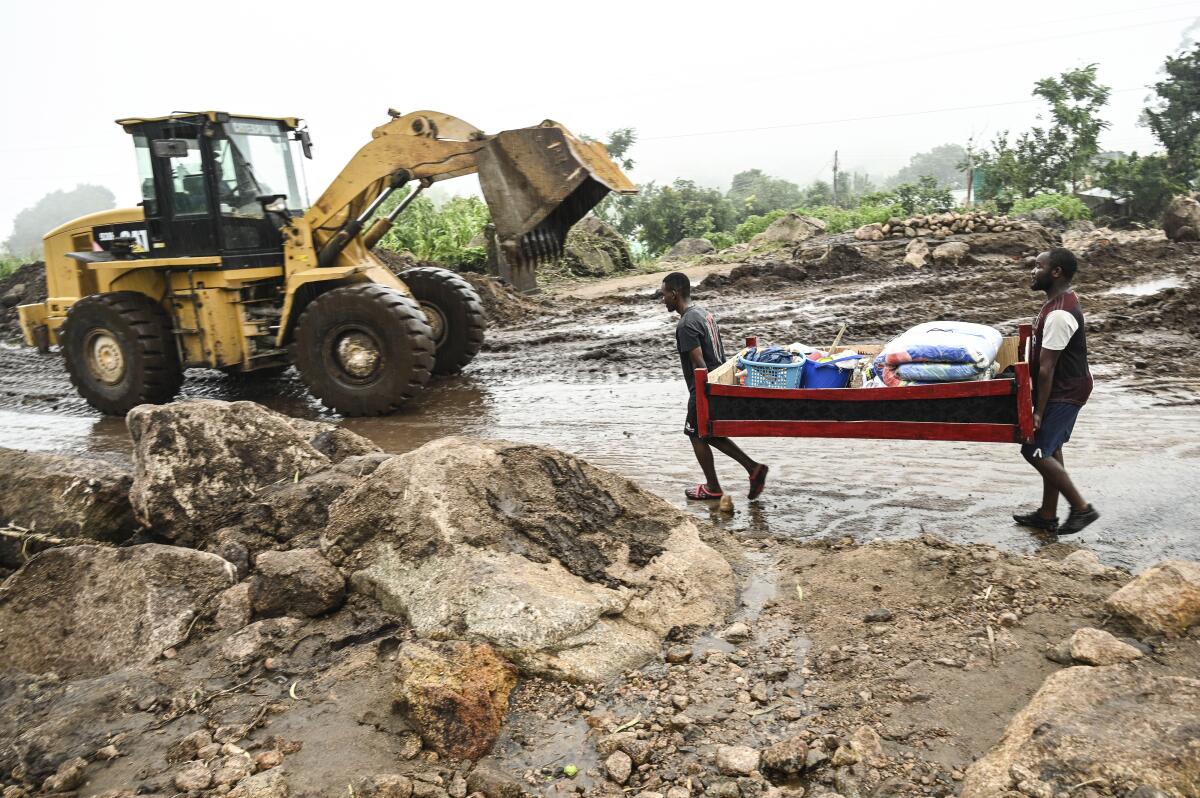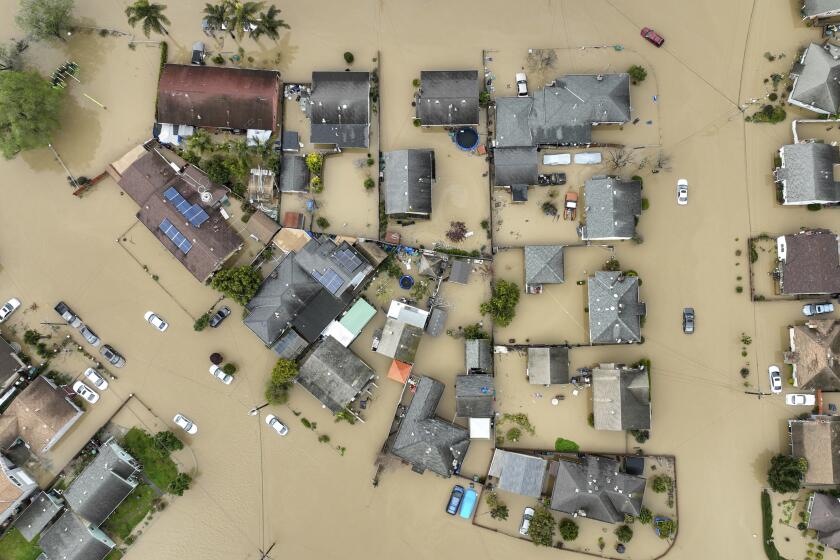Death toll rises in Mozambique, Malawi in wake of Cyclone Freddy

- Share via
BLANTYRE, Malawi — Authorities are still coming to grips with the scale of Cyclone Freddy’s destruction in Malawi and Mozambique, with more than 370 people confirmed dead, several hundreds still missing and tens of thousands displaced.
On Friday, Malawi authorities said Freddy killed at least 326 people, with 200 still missing. There are hundreds of evacuation centers set up across the country for survivors. Malawi’s president, Lazarus Chakwera, declared a 14-day national mourning period Thursday.
In Mozambique, authorities said at least 53 people have died since Freddy’s landfall Saturday, with 50,000 still displaced. It’s expected that the death toll in both nations will continue to climb.
Cyclone Freddy dissipated over land late Wednesday after it made its second landfall in Mozambique and then Malawi over the weekend and caused mass devastation in several regions, including Malawi’s financial capital, Blantyre.
“A lot of areas are inaccessible, restricting movement of assessment and humanitarian teams and life-saving supplies,” said Paul Turnbull, the World Food Program’s director in Malawi. “The true extent of the damage will only be revealed once assessments have been concluded.”
Both nations were already facing a cholera outbreak before the cyclone hit, and there are fears that the flooding could worsen the spread of waterborne diseases. Mozambique was also dealing with Freddy’s first battering and floods earlier in the year.
For decades the levee on the Pajaro River was ignored by the federal government, despite repeated pleas, breaches, floods and even two deaths.
Scientists say human-caused climate change has worsened cyclone activity, making them wetter, more intense and more frequent.
Cyclone Freddy has ravaged southern Africa since late February, when it pummeled Mozambique, Madagascar and Réunion. It then looped back to the African mainland after regaining strength over the Mozambique Channel.
Freddy first developed near Australia in early February. The World Meteorological Organization has convened an expert panel to determine whether it has broken the record for the longest-ever cyclone in recorded history.
More to Read
Sign up for Essential California
The most important California stories and recommendations in your inbox every morning.
You may occasionally receive promotional content from the Los Angeles Times.











